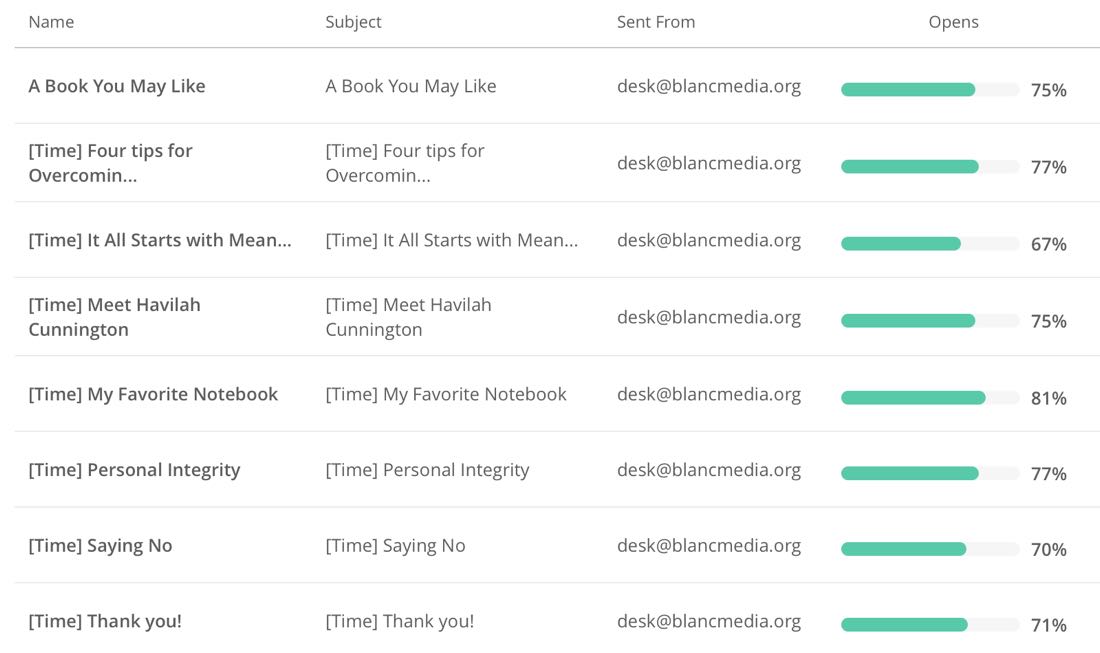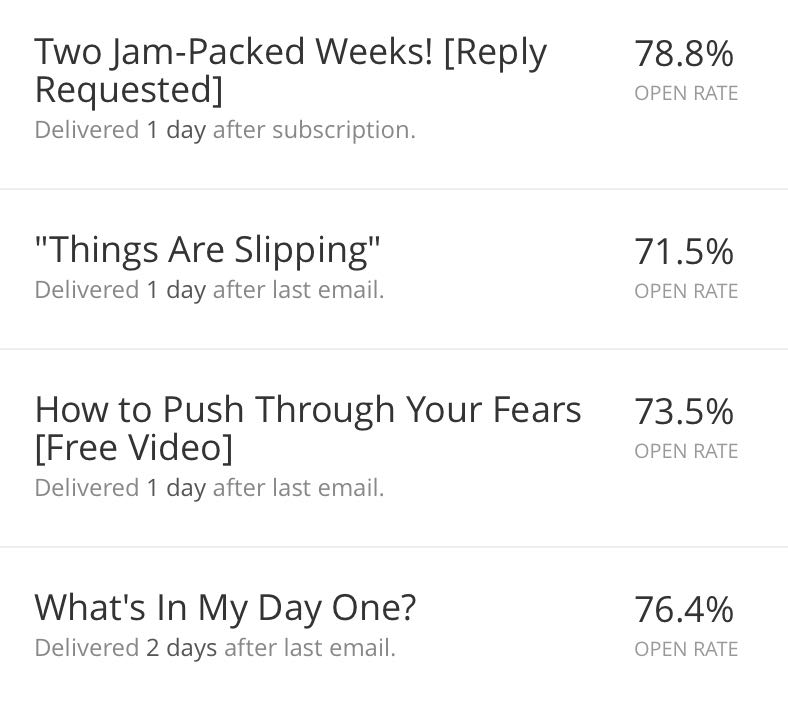
Let’s say you’ve created an incredible method for potty training dogs.
You know there are folks out there with dogs that are not potty trained.
And you’re trying to share your ideas and approach to doggy potty training. Because you genuinely care about animals just as much as their owners. You know that doggy potty training is one of the most frustrating aspects of new pet ownership and your methods are so great you’re hungry to share them with others.
Imagine two scenarios for telling someone about your doggy potty training ideas…
- In the first scenario, you’re hanging out on a busy street corner. And you’re talking out loud to anyone and everyone who walks by, hoping that someone in the crowd happens to have a dog that needs to be trained.
-
In the second scenario, you’re at home and you get a call from a someone. They’re a friend of a friend, and they just bought dog. They would love to meet with you and learn what you know about doggy potty training.
Which of those two scenarios are you most likely to have an impact?
The second one, of course. There are a few reasons as to why:
First off, the person reached out to you and initiated the relationship. Which means they are the ones interested in the topic and they are asking you for help.
Secondly, you have their full attention because it’s a one-on-one conversation.
If you remember from last week, the whole aim of your content strategy should be to (a) provide value at all times; (b) be relevant to your reader; and (c) support your business goals.
You are far more likely to provide value and be relevant if the person you are communicating with is paying attention.
What we love about the first scenario is that it inflates the numbers. We can say things like “3,000 heard me talking about doggy potty training today.”
Which sounds so much cooler than “I met with one person and spoke to them about doggy potty training.”
It is tempting to spend all our energy on reaching the most amount of people. To focus on mass, shotgun-style messaging. Rather than to focus on individualized, personalized, relevant messaging.
(Side note, you can read more in my article on relevancy over recency.)
But here’s what’s awesome about using email to communicate your message:
With email, you can be relevant and personalized at scale.
What does that mean? Let me explain how how I do it using an email welcome series…
The “Email Welcome Series” has become one of my favorite ways to communicate with people.
When someone signs up for your email list, or when they buy something from you, or when they register for something, that is the moment they are most paying attention…
- That is when they are the most interested in you, your topic, and/or your product or service. You know this without a doubt because they have just demonstrated as much by signing up for something or purchasing.
-
Therefore, this is when they are the most likely to read any email(s) you send them because they are paying attention. They are interested right now.
Here is how I used to do my email welcome series:
After someone would subscribe to my newsletter list or purchases my book, I would send them a “welcome” email or a “thank you” email and that was it.
At least I was sending them something, which is a step above sending nothing at all. But there is a massive opportunity to do better.
What if your email welcome series contained 5 or 10 messages (or more) that were sent out in a series, instead of just a single, standard-issue auto-responder?
What if those 5 – 10 emails contained your most important ideas, your favorite resources, some personal stories, some “quick wins”, and more?
What an incredible opportunity you would have to help people make progress. To be extremely relevant and to have impact.
Like we talked about earlier: when someone asks you for help and is giving you their full attention, that is when you have the greatest opportunity to provide value. This is exactly what the “email welcome series” is — it’s like having a one-on-one conversation at scale.
Here is a little bit of context:
The current industry average open rate for an email newsletter is around 25%. Personally, I think that is terrible. If you’ve got an email newsletter with a 25% open rate, you may be right in line with the industry average, but it also means 3 out of 4 people aren’t interested in what you’re sending. Ouch.
(For the 3 email newsletters I run, our open rates average 55%.)
But…
For most “confirmation” emails (the first email someone gets after they’ve signed up for a list or purchased something), the open rate is more like 75%.
That first email is the one that will be read more than any other email you send.
With that in mind, I recommend you take the chance to send an awesome email (more on that in a minute).
Secondly, did you know that you can keep up that momentum?
Yep. Instead of a single welcome email, you can have a series of welcome emails and carry the momentum through.
You do this through storytelling, quick wins, and unbridled generosity. Here’s a look at the welcome series we send folks after they buy the Time Management class:

That 8-part email series has an average open rate of 74%. (Which is 1.5x better than our standard weekly email newsletter.)
Here’s a different (4-part) email series I sent to folks after they had signed up for an email list expressing interest in a new class I had been working on last fall.

That 4-part series had an average open rate of 75%. And do you see how the open rate starts going back up after the first email? How many email sequences do you know of where the open rate goes UP as the series progresses?
* * *
Here are a few reasons why your email welcome series is so powerful…
You have their attention now more than ever
If you’re passionate about what it is you have to say, you have an obligation to communicate it.
And the best time to communicate it is during the moment when they are the most engaged — when you have their attention.
You can provide additional value in the topic they’re most interested in
How many ebooks have you downloaded only for them to sit in a “to-read” folder within your computer? A lot, right? I have an ebook I give away to folks right here. And after you sign up to get the book, I have a series of emails I send over the next few days that are short and to the point. I know chances are good that whomever signed up for my book hasn’t read it yet, but that they are reading their email.
I do something similar with my class on Time Management. After people sign up for the class, they get a “bonus” series of emails. I give book recommendations, tell stories, and offer quick wins related to Time Management.
You can transition to the next topic and teach them more
Suppose you have two products you sell: one is a book of recipes for healthier cooking at home and the other is book teaching the practicals of meal prep and being organized in the kitchen.
After someone buys your recipe book, you could send them a handful of emails that highlight a few of your favorite recipes in the book, plus perhaps a few new ones that aren’t yet in the book. Then, a week later, you could begin to change topics from the what of cooking over to the how of cooking.
Begin sharing some tips and stories and suggestions about being organized in the kitchen, and then take the opportunity to sell your second book.
Because your email welcome series is fully automated, you can have all of this happening on in the background. Which means that the right person is getting the right email at the right time. This is known as putting relevancy over recency (which I’ll get to in just a minute).
You can build a relationship
This is the whole point right here. Use your emails to tell stories, be personal, and have fun. Because you’re playing the long game with your business, the best thing you can do is build customers for life. And one of the best ways to do that is to give, give, give, and give some more. (See this article and scroll down to the bullet point about understanding the rule of reciprocity.)
Derek Sivers, from his book, Anything You Want:
Never forget that everything you do is for your customers. Make every decision — even decisions about whether to expand the business, raise money, or promote someone — according to what’s best for your customers. […]
It’s counterintuitive, but the way to grow your business is to focus entirely on your existing customers. Just thrill them, and they’ll tell everyone.
When someone buys something from you, or signs up for your list, you have a massive opportunity to surprise and delight that new customer or subscriber.
* * *
By valuing relevancy over recency, you can:
- Help your audience get a deeper understanding of the content
- Establish trust in the relationship
- Make them feel like they’re part of something bigger than just a one-off product or download
- Surprise, delight, and serve them
Last week I said you shouldn’t be focusing on your metrics too much. But that they were still important. Here’s why…
If your open rates, conversion rates, and sales are all doing well it means you’re actually providing value. It means you are effectively communicating with people. It means you have earned their attention and trust.
In the next article I’ll share about how this all fits into your business goals.